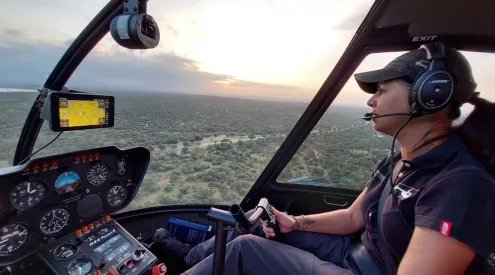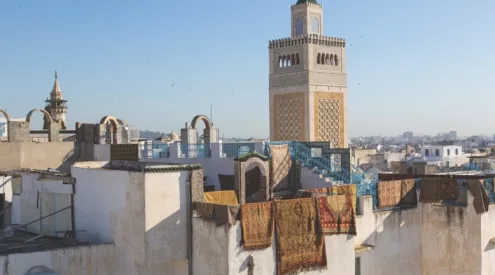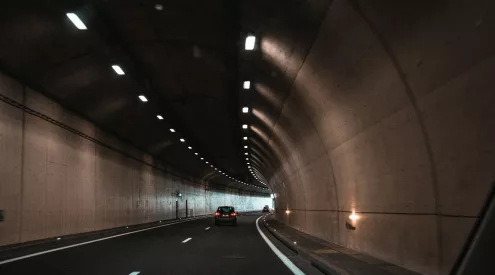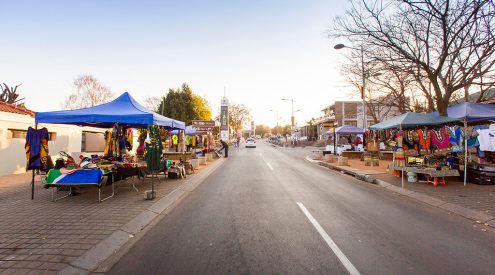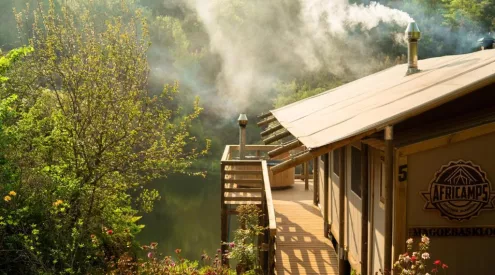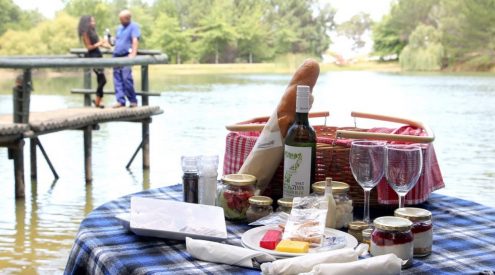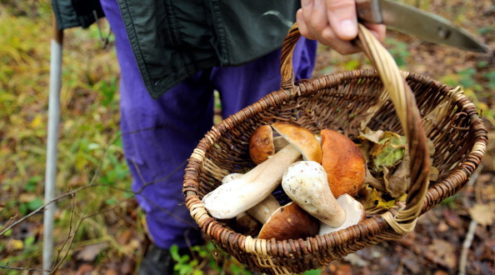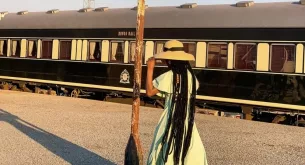When friends of mine, Gale and Alistair Matham, were unable to accommodate the tour in their lovely ‘Zvakanaka” guest cottages just north of Louis Trichard, they suggested we try Leshiba Wilderness, a private game farm a few kilometres further west, in the heart of the Soutpansberg. It was an inspired suggestion which has led us to one of the most beautiful places I have ever been to, and has set a new standard on the Braai4Heritage tour , one that’s going to be difficult to beat.
Driving north through the Limpopo lowveld, the Soutpansberg Mountains rise lush and green from the dense mopani and acacia bush below. With over 350 species of flora, the mountains, with their much higher rainfall, provide an abrupt transformation from the plains below, and within the haven of Leshiba Wilderness, white rhino, leopard and rare brown hyena can be found making the most of this diverse habitat. Zebra, kudu, giraffe and blue wildebeest can also be seen grazing on the patches of grassland that open up between dense thickets and the overall impression is of stunning variety – imposing koppies and peaks to one side, sweeping views to the other; dense, intriguing undergrowth and grassland dotted with grazing wildlife between.
Just visible through the trees above this idyllic African scene, lies the reconstructed Venda Village of Leshiba Wilderness Lodge. Joyce, one of the lodge’s excellent Venda chef-cum-managers, was born and lived her early years there in the traditional mud and thatch huts of the Venda people. When the Rosmarins, the property’s current owners, took over in 1993, the village had been abandoned, but recognising the historical and cultural value of the site, John and Gill Rosmarin, along with their daughter Kathryn and husband Peter, decided to rebuild, and hired well-known local artist, Noria Mabasa, to take on the project.
The result is a fascinating blend of local sculpture and practical design, of flowing walkways between traditional red-mud rondavels, of wooden decks and stunning views. En-suite bathrooms are connected to the original huts by elegant, interlinking passages – light provided by frosted glass windows set into the thick, red walls. There is a wonderful attention to detail everywhere, with a simple luxury that nevertheless remains true to the site’s original village origins.
It helps that Joyce can point out the exact rocks where she used to play as a child and that much of the colourful Venda fabric, sculptures and artwork on display have been made locally – in many cases directly as a result of the Rosmarin family’s involvement in preserving and sustaining local art and artisans. The Leshiba Venda Arts and Culture Trust, which manages the Leshiba Centre of Indigenous Knowledge, has raised almost five million rand and has invested the money back into local Venda artists in an ongoing effort to ensure that the rich artistic legacy of the area continues to thrive.
Amidst all this local Venda art and surrounded by our friendly hosts… we braaied. We “˜potjied’ actually, but being one of the cornerstones of the South African braai, the potjie is something the Braai4Heritage tour very much embraces. With the Rosmarins away on business, Joyce and Lucas were our co-hosts for the evening and between the two of them they put on an amazing spread: baboeti spring rolls, lamb-shank potjie and buchu crème-brele. I don’t have to tell you that it was absolutely delicious.
Joyce also made Jan’s evening, if not his tour so far, by showing him how to braai boerie directly on the open coals of the fire – no grid, just thrown in the embers by the open flame. When it came off absolutely perfect and ready to eat, Jan was forced to battle a rare moment of speechlessness as he tried to convey his joy at learning this new trick of his trade.
The next morning we were up early for a misty game drive and on the road just after nine. Mapungubwe awaits!





